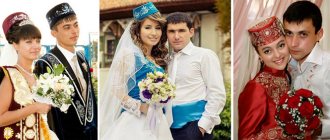Belarusian weddings have their own traditions and customs, the roots of which go deep into history. Not a single action of the wedding ceremony was accidental or unplanned. Belarusians are sensitive to the traditions of the people and when preparing modern weddings, as in past centuries, they carefully think through all stages, from matchmaking to post-wedding rituals.
Many are sure that wedding traditions in Belarus help make a young family strong and friendly, and also help preserve the knowledge and experience of their ancestors.
What were the requirements for young people?
If we take into account ancient rituals, then according to the laws only an innocent and chaste girl could enter into marriage. This sign spoke of public recognition and respect in the future. And if a girl deceived her husband and relatives, then, according to beliefs, all relatives of the family will face a series of curses and troubles.
Sometimes troubles were sent to entire villages. Therefore, the tradition of putting the sheet on public display after the first wedding night is still preserved in a number of villages in the country.
Another tradition was for the newlyweds to break clay pots after their wedding night. With a broken pot one could speak of the innocence of the young. In the opposite case, not only the bride, but also her relatives paid for the mistakes. The following rituals were performed as a sign of punishment:
- guests could break the stove or break dishes;
- the young relatives could put a collar around their neck and lead them around the village as a sign of general contempt;
- walls and gates were smeared with something unpleasant, for example, tar;
- They literally threw mud at their relatives.
The guilty bride herself was put on a horse backwards and in this form was sent back to her parents' house.
But the demands were made not only on the bride, but also on the groom. The traditions of the Belarusian wedding suggested that each guy at the age of 16 must pay a kind of fee in the amount of 1 ruble. Only after this was he admitted into the company of others and allowed to meet young girls.
At that time, for young people the amount was significant and if it was not there, then there could be no talk of any acquaintance. The fact is that in earlier times society was strictly divided into the poor and the wealthy. If the intended couple were from different walks of life, the marriage was usually considered unacceptable.
Preparing for the wedding of the groom's family
On the appointed day, relatives on both sides had a lot of trouble. For example, the task of the young man’s parents was to decorate the carts, and the first one should especially stand out; the groom traditionally sat in it. The arch was decorated in a special way, branches of coniferous trees were added to the decor. Ribbons were chosen in white and red colors. White ones were considered a symbol of chastity, while red ones symbolized a transitional stage in the life of the young.
Bells were considered an important decorative element. The largest one was hung in the middle of the arc, and several smaller ones were hung on the edge. The ringing of bells while the cart was moving was a signal to the village about an important and festive event. In addition, the ringing of bells was a strong protection against evil spirits and magical negative influence from possible envious people.
After carrying out the rituals with the cart, they began to assemble the festive table. It was placed in the center of the groom's house and decorated with a white tablecloth. Bread and water were placed on it, and a loud candle was also lit. The groom's father had to tie his son's hands with a special scarf, then circle him three times around the table and lead him to the threshold of the house.
It was the mother’s duty to give her son her blessing with a lit candle and an icon in her hands. Tradition suggested that the candle was taken with oneself as an amulet against evil forces, and the icons were left to protect the groom’s house. The matchmaker had to take with him sweets, finances, alcoholic drinks and other offerings. After the ceremonies, they were usually seated in the cart in the following order:
- groom;
- matchmaker;
- invited youth;
- godmother;
- brother by blood;
- young man's best friend;
- musicians accompanying the procession.
Despite a lot of worries on the part of the groom and his parents, the bride had an equally difficult period these days.
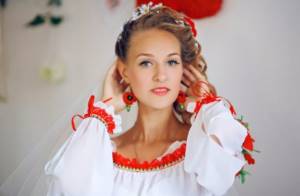
Wedding dresses
The dress that the bride would wear was chosen with special care. The bride's dress had to cover her shoulders, arms and legs. There was even such a sign that the dress must be bought on Wednesday, and the bride’s shoes - on Friday.
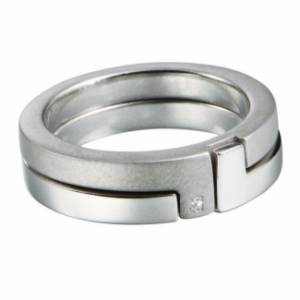
It was forbidden to let bridesmaids or other women wear the veil; it was also undesirable for other charming persons to try on the dress. Only virgin girls were allowed to wear white dresses. If the bride was pregnant, then on the second day they wore a dress painted red. Red symbolized protection from evil spirits and was the color of life.
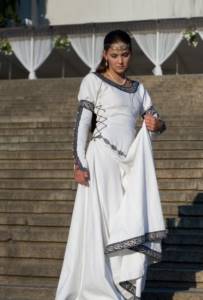
Preparing for the wedding of the bride's family
The bride also had a huge number of responsibilities and worries before the wedding ceremony. The treats were usually collected by the girl’s relatives. The bridesmaids dressed the bride in a specially selected house. At the same time, he had to be on the side of the young relatives. And traditions suggested that the groom drive past the chosen house.
It was also forbidden to dress up a young bride in a house with single-parent families or where there were widows or widowers. The main criterion when choosing a house is the presence of a strong and friendly family. The young bride's outfit included such elements as boots, a dress, a colorful bright belt and a ribbon that was tied around the woman's waist. The veil was also present and it was an important attribute, which included the following elements:
- she had to hide the bride's face;
- a wreath of flowers should have been placed on top.
At the same time, wreaths were made according to special traditions. Some of the flowers were made using ribbons and plain paper, some were real. The basis for the wreath was a cardboard circle. Wildflowers were usually woven into protective ones such as mint, periwinkle, rue and viburnum. The main meaning of mint was the orphanhood of the bride, so it was not woven without a reason. The wreath was worn exclusively by an innocent girl.
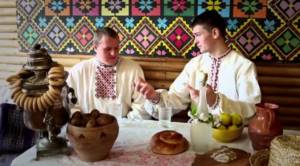
Wedding procession
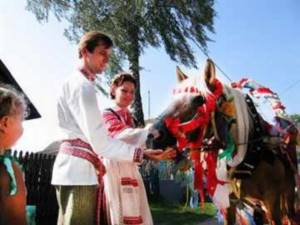
Nowadays, it is problematic to use traditional transport, since it is a horse-drawn cart. Moreover, the groom must travel with his friends separately from the bride and her bridesmaids. The minimum number of motorcades is 7. Cars, like the wedding room, can be decorated with towels and wildflowers with ribbons.
After all the guests and newlyweds are seated in their cars, the father on the bride’s side must walk around the entire procession with the icon in the direction of the sun. The mother should follow him and at the same time sprinkle everyone with grain. The procession then heads to the temple for the wedding. And parents can immediately go to the establishment where the wedding will take place with a feast. They are not present at the wedding, since according to traditions they can break this amulet circle as soon as they create it.
KNOWLEDGE BASE: Wedding in the style of “Paris” - the elegance and luxury of France
Belarusian stage of matchmaking
Matchmaking is considered the primary stage of a wedding. In Belarus, it is customary to get married on certain lucky days, namely Saturdays, Tuesdays and Thursdays. A minimum of 3 people, a maximum of 6, came to get married. These were brothers and sisters, as well as relatives and godparents.
The groom was not allowed to attend the ceremony, since often the bride could refuse the wedding, and it would be at least unpleasant for the young man to listen to this, and the refusal would have a strong negative impact on his reputation and self-esteem. Before the matchmaking stage, wiser parents first looked closely at the initial relationship between the young people and made appropriate conclusions about the possibility of marriage and the happiness of the future family.
Matchmakers were forbidden to come empty-handed, so they usually brought with them gifts in the form of alcohol, loaves of bread and other pleasant offerings. The ritual began with jokes to defuse the situation. Next, the parents made a decision about whether to send the matchmakers back or give them a chance to join the family.
After the consent of the parents, the bride had to say her word. If the answer was positive, the matchmakers and relatives drank a bottle of alcohol, in particular wine. If the bride refused, the matchmakers could take their gifts back. The matchmakers could take revenge on the rejected girl if the main one broke a bottle of alcohol against the gate. According to legend, in this case, the woman who refused might not get married at all.
Towels for a wedding
The towel at a Belarusian wedding is an integral part of the ceremony. According to Belarusian custom, you need to stock up on at least 40 towels. They are presented to the bride's parents and used to decorate the wedding procession (cars, horse-drawn carriage) on which the happy newlyweds will ride. The newlyweds keep towels on their way to church and tie their clothes with them. This is where the tradition of tying them on the clothes of witnesses at a wedding arose.
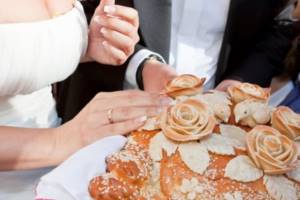
How was the time chosen for the wedding ceremony?
Considering that Belarus is an Orthodox country for the most part, it is logical to assume that such entertainment events were not recommended during the period of fasting, especially the four great ones:
- Uspensky;
- Velikigo;
- Petrovsky;
- Rozhdestvensky.
There were also special dates on which celebrations were not recommended. For example, the month of May, the eve of any church holiday, Tuesday and Thursday, and also a leap year was considered unfavorable for weddings. But in addition to unfavorable periods, there was a custom that did not recommend holding weddings within a year after the death of a relative of any degree of relationship.
The following periods were considered the most favorable times for wedding celebrations:
- from the end of August until the Christmas Ambassador. The exception is a special memorial week;
- time from Epiphany to Maslenitsa. Otherwise, he was called the winter meat eater.
Excluding any of the unfavorable days, the family could choose any suitable wedding time at their discretion, in agreement with each other.
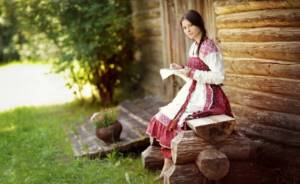
What is handshake
This stage is very important in the screening process. In common parlance this is called binge drinking. After it, neither party could refuse to hold the wedding. The fact that the bride and groom did not take part in the event gives a special charm to the tradition. The bride could express emotions both psychologically and verbally, but the groom had to remain silent. the matchmakers spoke for him.
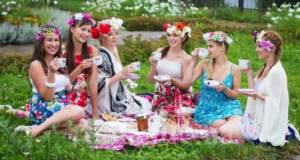
Hosting a bachelorette party in Belarus
Traditionally, after the wedding, the bride had a bachelorette party on a Saturday afternoon. In the country, the event had its own name - subornaya Saturday. After receiving the blessing from the parents of the newlywed, the friends had to weave a wedding wreath together.
The characteristics of the wreath are as follows: bright color, density and round shape. The characteristics of the wreath correspond to the quality of life of a young family in the future. After weaving the wreath, the friends began creating jewelry for the couple, as well as for themselves. In the evening, the groom and his groomsmen visited the house.
The duties of one of them are to convey gifts to the young man for the bride. Only after following the tradition could young people be allowed into the house. And the groom also had to pay a ransom to be able to see the bride. Bachelor parties in Belarus are not as common as in Russia.
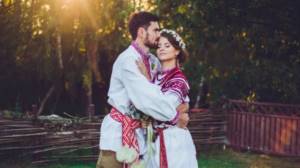
The nuances of a wedding ceremony
The main wedding tradition in the country is baking a traditional loaf. It was baked in the home of both parties. Only married young girls took part in the tradition, and pregnant women who were present during the making of loaves were also given special honor. Unmarried people, widows, and married but childless women were not allowed close to the loaf.
After preparing the groom for the trip to marry the bride, he was taken out into the yard. There was already a table waiting for him, which had been prepared in advance and covered with a white linen tablecloth. The father bandaged his son's hands with a special towel and walked him around the table three times. Then at the threshold he was given an icon. After the son receives his mother's blessing, he goes for the bride.
The bride's home was also making important preparations. The older generation of women cooked for the table, and the younger generation helped dress up the young women. A wedding in Belarus suggests that food for the ceremony should not be prepared in the newlywed’s home. For these purposes, housing was selected that was on the side of the groom's house. There should have been no deaths, divorces, widows or fire hazards.
It is especially important to take a responsible approach to preparing the appearance of the bride herself. The ritual included selecting and putting on clothes, collecting a veil, braiding a braid, and also tying the waist with a special belt, as mentioned above. After complete preparation of the young man, a noisy and cheerful ransom was held. After a successful transaction, the groom took the “living goods” to his house and a small feast was held there. After which the young people’s path led to the temple.
After the couple visited the temple, they stood on the towel, leaving a kind of gift or ransom. These were a pair of copper nickels and a red belt. During the wedding and registration stages, the bride was supposed to stand to the left of the groom, as if near his heart area.
After the wedding stage, the newlyweds must visit the local cemetery, paying tribute to their ancestors. After the official part of the celebration was completed, a three-day feast began. After its completion, 9 days later, a feast was held for parents and the older generation. If possible, the feast was held on the wedding day, but due to a lot of hassle, the newlyweds often did not have time to perform the ceremony on time, so the date was postponed. After the parents' feast, the honeymoon began, which lasted from the ninth to the forty-fifth day.
Matchmaking in Belarus
The first pre-wedding stage is matchmaking. The most favorable days for matchmaking were considered Saturday, Thursday and Tuesday. 3-6 people came to get married: godparents, parents, sisters and brothers. The groom was not allowed to participate in this ceremony. Often matchmakers had to listen to a refusal, which was extremely unpleasant for the groom’s family. To avoid this, before going to the bride’s parents, the future husband’s relatives spent a long time looking closely at the relationship between the young couple and the chosen one herself.
Matchmakers had no right to come empty-handed. They always took honey, vodka, loaves and other gifts with them. The action itself began with jokes. As a rule, the phrases “your goods, our merchant”, etc. were always used. The parents of the potential bride had to decide whether to refuse the matchmakers or accept them into the family. If the parents agreed, then it was the bride’s turn, who also had to give her consent. If everything went well, then the matchmakers and the girl’s relatives drank a bottle of wine that the matchmakers brought. If the girl said “no,” the matchmakers had the right to take all their gifts.
According to legend, if the main matchmaker broke a bottle against the gate of a girl who refused, she would never get married again.
Video about wedding rituals and traditions in Belarus
Best time for a wedding ceremony
When not to
was to arrange a wedding:
- Weddings were not celebrated during fasts: Uspensky, Petrovsky, Veliky, Rozhdestvensky.
- Wedding feasts were not held on the eve of great church holidays, on Thursday and Tuesday, on leap years, in May and for a whole year after the death of any relative.
Favorable
The time for weddings was considered:
- The period from the end of August until the Nativity Fast (the only exception was the memorial week).
- The period from Epiphany to Maslenitsa (winter Meat Eater).
Bride
A couple of days after the successful matchmaking, the future husband and his relatives come to the bride again. Now the young people must show everyone present all their beauty, skills and abilities. That is why this tradition is called bridesmaids. After this, the young man’s mother carefully examines the bride’s dowry. The entire viewing process is accompanied by lamentations and songs.
Handcraft
Wedding traditions and customs in Belarus included hand shaking. Before the wedding, another important event occurs - a drinking binge or a handshake. It is the drinking that finally seals the decision to get married. After both parties shook hands, no one could refuse the wedding. The bride and groom were seated at the table next to each other, and the bridesmaids began to sing songs in which they celebrated the future married couple.
It is noteworthy that neither the groom nor the bride did anything. The bride could only groan, gasp and cry to the howls of the specially invited maid, and his relatives, friends and matchmakers spoke for the groom.
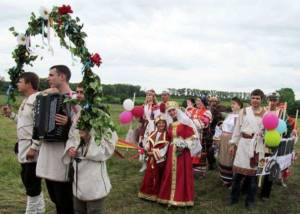
hen-party
Before the wedding day (usually on Saturday), a bachelorette party was held at the bride's house. This event was called subornaya Saturday. The bride's friends receive a blessing from her parents, after which they weave a wedding wreath. According to Belarusian traditions, the wreath should be bright, round and dense, because in this case the life of the future spouses will be the same. After this, the bridesmaids began to weave wreaths and make decorations for the groom's friends and for themselves. In the evening it was time for the groom and his friends to arrive. The friend was supposed to deliver gifts for the young bride. Only after this were the men allowed into the house. In order to see the bride, the groom had to pay a ransom. By the way, bachelor parties in Belarus were held much less frequently.
wedding ceremony
Any Belarusian wedding begins with the baking of a traditional loaf, which is baked both in the bride’s house and in the groom’s house.
Only married women were supposed to bake pies, among whom pregnant women were very welcome. Childless women and widows were not allowed to eat the loaf.
Wedding ceremonies and traditions in Belarus put forward the most stringent requirements for this process.
After the groom was fully dressed and prepared for the trip to pick up the bride, he was taken out into the courtyard, in which there was a pre-prepared table with a festive white linen tablecloth. The guy's father tied his hands with a towel and circled him around the table 3 times. After this, the groom was led to the threshold and handed the icon. After the mother's blessing, the son set off on his journey.
The bride's house was also not idle. The older women took care of the festive table, while the girls prepared the bride. According to the old tradition, the bride was not supposed to be prepared in her own home. For this purpose, a house was selected on the same side of the street where the future husband lived.
Strict requirements were also put forward for the house: there should be no fires, child deaths, divorcees or widows.
The future wife was prepared with all responsibility and care. They braided her hair, adjusted her outfit, tied it with a red belt, and decorated her head with a veil. After the bride was completely ready, the ransom began. This action always took place noisily, cheerfully and even theatrically. After the successful completion of the “deal,” the groom took his precious “goods” to his parents’ house. A small feast was held in the house, and the young people went to the temple.
Video about wedding traditions in Belarus
In the temple, a young couple stood on a towel, under which they placed 2 copper coins and a red belt. During the wedding and registration, the bride should stand to the left of the chosen one, that is, at his heart. After the wedding, the couple went to bow to the graves of their ancestors.
After the official part, the feast itself began, which lasted 3 days. 9 days after the wedding, a feast was held for the parents, who, due to many wedding worries, were not able to feast normally on their wedding day. Only after this did the honeymoon begin, which lasted from the 9th to the 40th day.
Features of a Belarusian wedding
What other wedding traditions exist in Belarus?
- Wedding outfit. Belarusians were very careful when choosing a dress, which had to cover the legs, shoulders and chest. The dress itself was bought on Wednesday, while the shoes to go with it were bought on Friday. Other girls had no right to try on other people's wedding dresses. Pin charms were pinned onto wedding clothes, small icons could be hidden in the layers of the dress, rowan leaves were placed in shoes, and rowan fruits were placed in pockets.
- Veil. This is the most important wedding accessory, which carries not only an aesthetic load. This detail of the wedding image also had a sacred meaning. At the end of the wedding celebration, the husband's mother approached the bride and took off her veil, instead of which she put a scarf on the newly-made wife's head.
- Wedding rings. According to ancient traditions, the husband received a gold ring, and the wife received a silver one. In this way, a pair of Sun and Moon was created. The rings were purchased in one place. There should not be any inscriptions or drawings on them.
- Meeting of the newlyweds before the feast. The newlyweds were greeted with mead and a homemade loaf. The young people had to sip the vodka and pour it over their shoulders. The couple kissed the loaf and bowed to their parents.
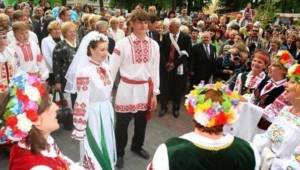
- Feast. The young people approached the table in a clockwise direction and left in the opposite direction. Identical wine glasses, forks and spoons were prepared for husband and wife. To increase their fertility, the young had to eat scrambled eggs with one spoon. During the feast, dances, songs and dances, the young people should not be separated. In many villages, priests even tied the hands of spouses so that no person could come between them.
- Bitterly! This word was heard at weddings for a reason. It is believed that it is with its help that a couple can be protected from the evil eye, envy and evil forces.
Of course, modern Belarusian weddings are very different from the past. However, many couples try to adhere to the laws of their ancestors and bring the lion's share of wedding traditions into their ceremonies.
Are you interested in wedding traditions of Belarus? Which of the rituals did you find most interesting? Share your opinion in the comments.
